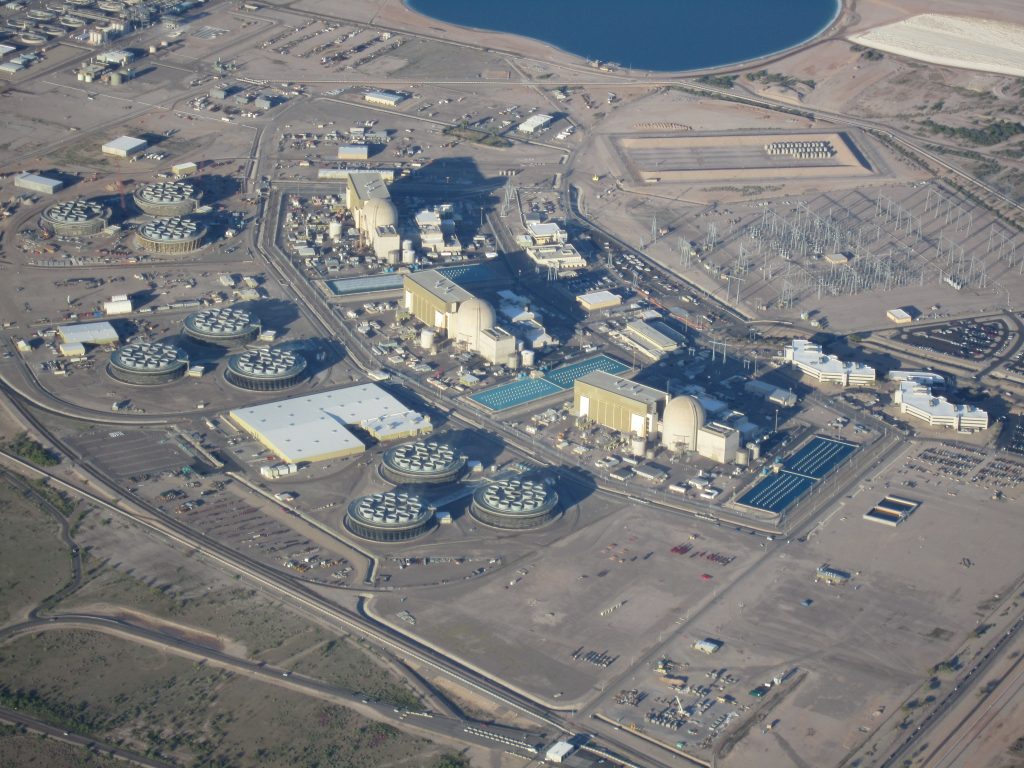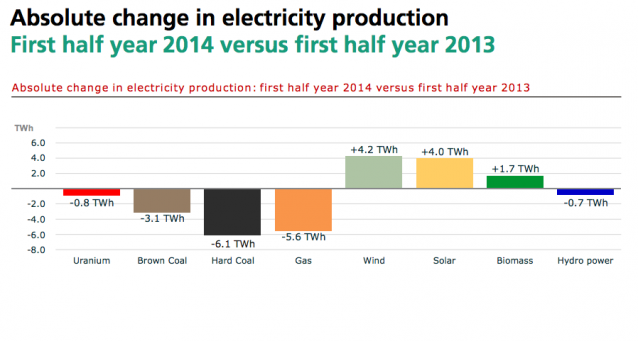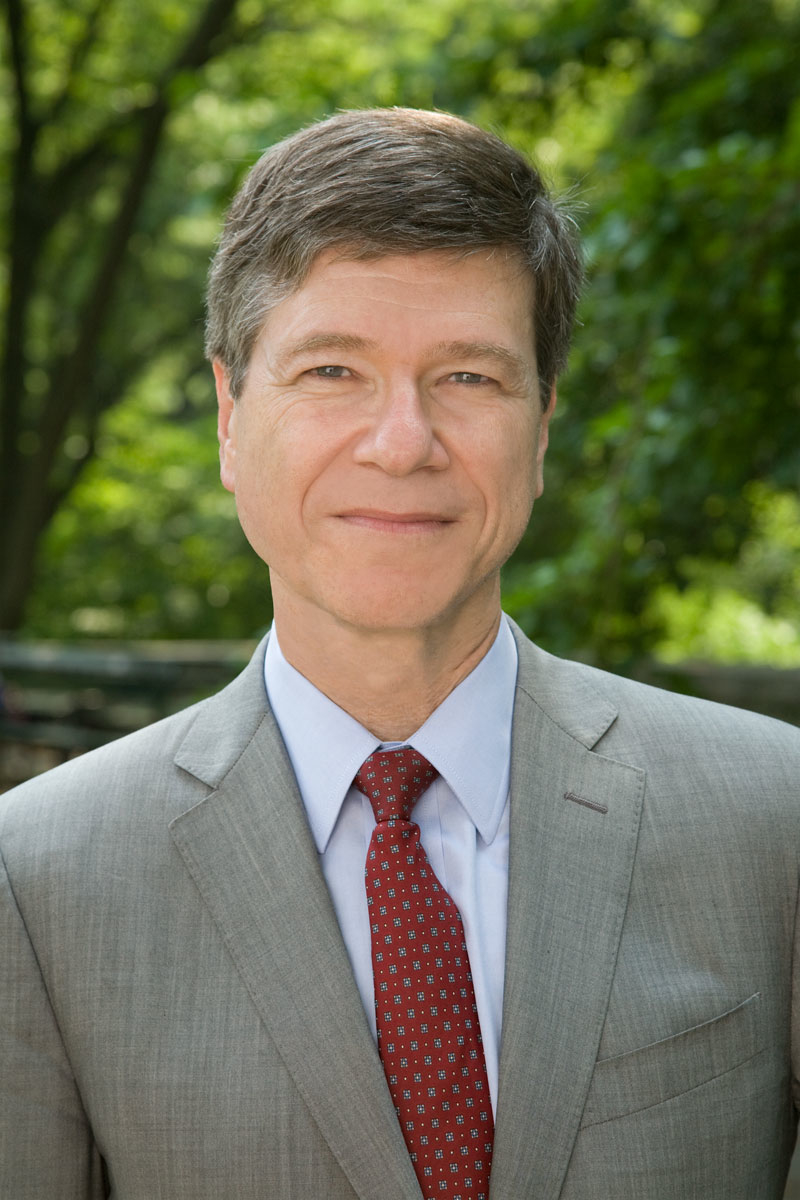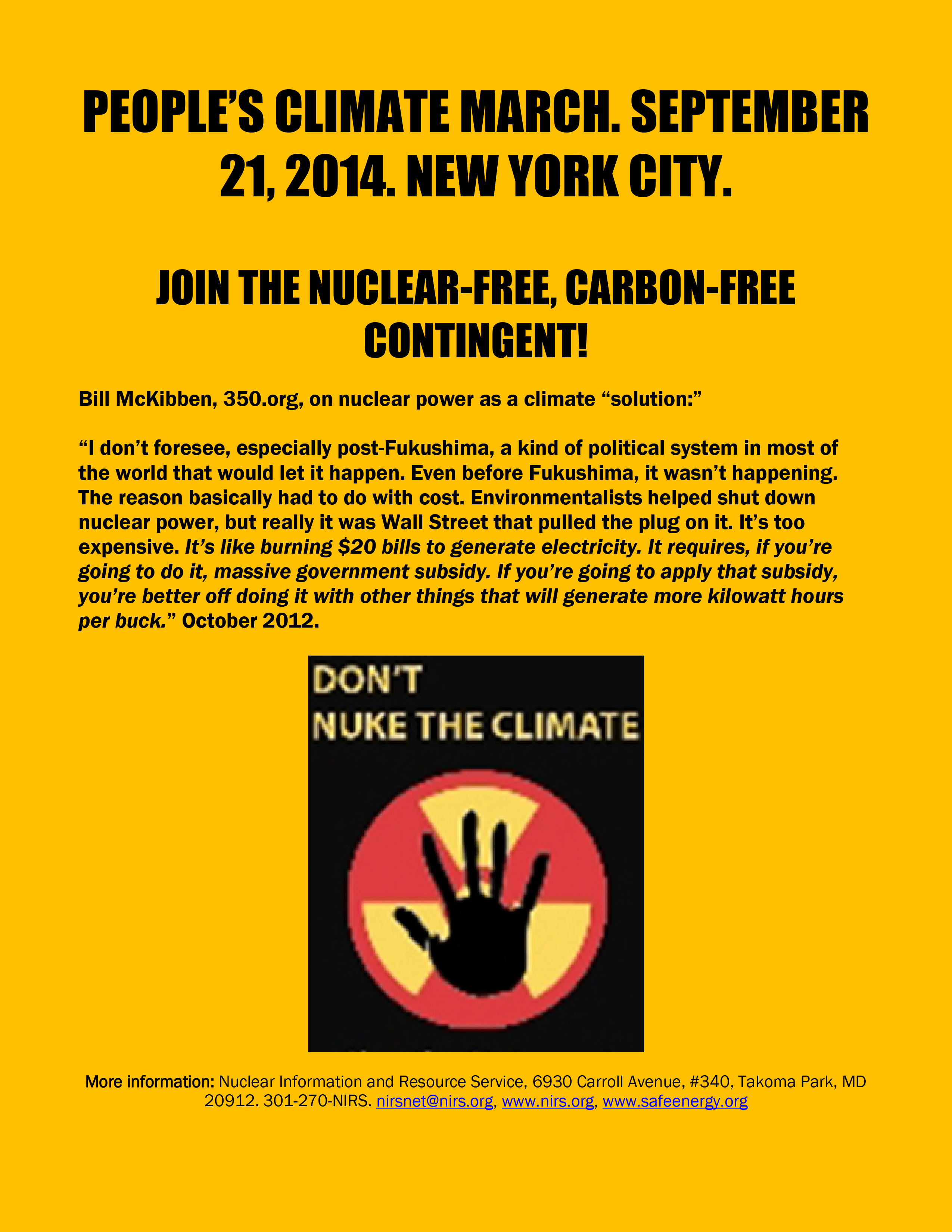
In any battle, it’s important to know, understand, and keep current on what the other side wants–what its objectives are, how it intends to get there. For clean energy advocates, that means keeping up with the nuclear industry’s strategies and tactics, and we try to keep you informed and updated on those.
This week brought some new information on the nuclear industry’s efforts to save itself from its current path to oblivion.
But as Scott Denman, former executive director of the Safe Energy Communication Council, put it this week, certain truths remain constant:
Nuclear industry maxims:
(1) The problem is always something other than the obvious.
(2) Whatever the question, the answer is always the most convoluted and complex.
(3) Regardless of the specific need, nuclear is always the way to meet it.
(4) Make up your own self-justifying paradigm & be just like the nuclear utility industry!
The first exhibit is a summary of the proceedings of a Capitol Hill event held on June 3, but released only this week, hosted by a group called the American Consumer Institute (ACI) (whose name appears to reflect the exact opposite of its real purpose) and the Nuclear Energy Program at the Center for Strategic and International Studies (CSIS). The event was titled WHAT IS HAPPENING TO BASELOAD POWER GENERATION IN U.S. ELECTRICITY MARKETS, though the summary posted this week on the ACI’s website was changed to the blander Market Flaws and Distortions in Competitive Electricity Markets.
The first title got it right though: BASELOAD! And more Baseload. With uneconomic nuclear reactors closing and more threatening to fall, how will we ever meet baseload power demands?
Sample quote from the summary: “Grid reliability requires an adequate supply of baseload generation. Unfortunately, PJM’s capacity market does not adequately compensate the fixed cost of operating competitive baseload plants, which undermines the economic competitiveness of these units. In the latest PJM auction, capacity prices roughly doubled – but that increase is still not enough to produce the investment that is needed to preserve baseload generation.”
In other words, a doubling of wholesale electricity prices still isn’t enough to save those uneconomic nukes (and some coal plants). They need more! Ratepayers, of course, might beg to differ.
And so would anyone investing in or even examining the 21st century electricity grid, for which baseload power is an increasingly antiquated concept.
No one would question the need for adequate electricity supplies 24/7. And, in the 20th century, the best and usually cheapest way to obtain those supplies was for power plants themselves to operate 24/7. But that’s no longer the case.

Renewable energy, especially the two fastest-growing renewable technologies–wind and solar–are mostly intermittent (though that itself is changing as storage technology further develops and drops in cost). The sun obviously doesn’t shine at night, and it isn’t always shining during the day everywhere either–although solar power definitely comes through when power demand is highest: on hot, humid, sunny days. And wind tends to work a little better at night, though daytime wind is strong in much of the country too. 21st century technology, along with improved micro-weather forecasting, can account for these variables and seamlessly move power from where it is being generated to where it is not. The electrical grids are large and there are plenty of locations to choose from to provide renewable power–which, and this is invariable–is cheaper than most nuclear power. That’s how Germany reached nearly 1/3 renewable power for the entire first half of this year, Denmark regularly reaches 50% or more, and other European countries are greatly increasing renewable penetration as well.
Those behemoth baseload plants can’t ramp up and down quickly like renewables (and natural gas) to take into account peaks and drops in electricity demand; in that sense, too many baseload plants can actually interfere with the implementation of cheaper and cleaner renewables. But it’s where the renewables undercut the nuclear prices during these peak times that is causing the reactors to become increasingly uneconomic.
Moreover, energy demand drops substantially at night. Yet those big baseload plants are still chugging along, producing excess and uneconomic electricity no one needs.
But if you want to have an idea what the industry wants, you only have to look at the UK, where Electricite de France is salivating over a possible $1.36 Billion windfall (800 million Pounds) from rules there intended to deal with renewable intermittency–but not–supposedly–with high-cost baseload power plants. According to the Guardian, “Tom Greatrex, the shadow energy minister, said the value of letting existing nuclear capacity take part in the auctions seemed dubious.
“Nuclear is a significant baseload power source, but is not flexible enough to be part of an efficient capacity market. There are, therefore, serious questions as to why Decc ministers have given nuclear power stations the green light to bid for capacity payments when they won’t be able to add flexible capacity to the mix.”
In short, the ACI’s event, and all efforts at preserving “baseload” power at any cost, are asking the wrong questions in the wrong century. The better question is: how quickly can we reduce reliance on dirty and expensive behemoth baseload power plants and implement the cleaner, safer, and more affordable 21st century energy system?
Oh, but then there’s climate, and we’ll be hearing more about that too.

Yesterday, the Sustainable Development Solutions Network at the United Nations, headed by Jeffrey Sachs, who runs the Earth Institute at Columbia University, released a report Pathways to Deep Decarbonization, which shows ways different countries, and the globe as a whole, can reduce carbon emissions to keep global warming from topping 2 degrees centigrade at mid-century.
There’s no doubt the challenge is large, but there are a lot of different pathways to get there. And this report, suffering from a critical internal contradiction, doesn’t do the trick.
For example, for the U.S., its basic recommendation calls for a power mix in 2050 of “40% renewables (hydro, solar, wind, biomass, and geothermal), 30% nuclear, and 30% fossil fuel (coal, natural gas) with CCS. No fossil fuel generation without CO2 removal remains in the system by 2050.”
Yet, apparently leaning on the ravings of Dr. James Hansen, who is now based at the Earth Institute (but is not listed among the authors of the report), the report advocates only Generation IV reactors and admits they won’t be ready until the 2035-2040 timeframe.
And thus the contradiction: by 2050, nearly all of the existing reactors in the U.S. will have reached the end of not just their licensed lifetimes, but of their license extension lifetimes as well (not that it’s clear reactors can or will last even that 60-year period). With 100 atomic reactors currently contributing about 19% of U.S. electricity, and that percentage dropping to near zero by 2050, and Generation IV reactors not even available for construction until at least 2035, to reach 30% of our power–10% more than nuclear ever has attained, would mean an unpredecented (and highly unaffordable even if problems did not arise) nuclear construction binge. Repeat after me: not gonna happen.
An entirely laughable “high nuclear scenario” examined in the report would bring nuclear up to 60% of U.S. generation. That even the report itself doesn’t seem to take that scenario seriously didn’t stop incessant nuclear booster Eduardo Porter of the New York Times from touting that number in his piece on the report today.
Perhaps the report’s authors, and Porter, should have looked at NIRS’ website, where at least eight separate studies that could have used the same Pathways to Deep Decarbonization title all provide such pathways to a nuclear-free, carbon-free energy system by mid-century. Not 30% fossil fuel with unproven and expensive CCS technology. And certainly without dirty nuclear power. Note: the studies are currently spread across two sections on our website (Alternatives to Nuclear and Nukes and Climate Change), but will soon be consolidated in a new nuclear-free, carbon-free section.
Staying on climate, here’s an op-ed published on a nuclear blog last month, but that we just noticed this morning, talking again about the EPA’s proposed carbon reduction rules potential effect on nuclear power.
It is in some ways more measured than many of the pro-nuclear reactions to the proposal, but still optimistic:
“At a minimum, it should help halt the premature closures of the current fleet of nuclear power plants. The longer-term impacts are more difficult to project. It should encourage the completion of the current nuclear power plant construction projects, and it may revive some that are on the books that have stalled in recent years. It could even spur the initiation of some new projects, although that is less certain. It will probably give at least some encouragement to advanced reactor development plans. However, realistically, the goals in the EPA plan are relatively short term, so designs that are not yet ready for prime time may not help meet the goals.”
We’ve already written extensively on the EPA’s carbon reduction proposal (for example here and here) so won’t add more now except to say that the implementation of these rules, once they’re finalized (and assuming they still have the nuclear sections intact), will be critical. That will happen at the state level and activists need to begin now to organize and mobilize in your states to prepare for these upcoming battles.
 And you can begin by signing and promoting our petition to remove those subsidies from the rule (after all, if we can remove them now, it will help a lot in the long term), and signing on to comments we’ll be providing groups in a month or so. Sign and share the petition here.
And you can begin by signing and promoting our petition to remove those subsidies from the rule (after all, if we can remove them now, it will help a lot in the long term), and signing on to comments we’ll be providing groups in a month or so. Sign and share the petition here.
And don’t forget the nuclear-free, carbon-free contingent at the People’s Climate March, September 21, in New York City!
A bit more under the radar in recent times is the nuclear industry’s campaign to get out from under NRC safety regulations. Now, the term of art they’re using is “cumulative regulation,” which is nuclear obfuscation for the simpler concept that they really dislike “too much regulation.”
The industry is trying to claim the NRC needs to better prioritize its safety rules, a concept even a critic like Dave Lochbaum of Union of Concerned Scientists agrees with, but it’s clear from this article that the industry’s real concern is cost. They just don’t want new safety rules in the first place, and now they are more aggressively trying to block them and get out from under them, aided by nuclear boosters like Sen. James Inhofe (R-OK), who never met a nuclear safety regulation he likes.
Yes, we clean energy advocates have our hands full. But remember those nuclear maxims above–there is more truth in those than all of the industry’s propaganda. And, unlike in years past, it is the nuclear industry that is playing defense. We remain on the offensive, and that’s a good place to be.
Michael Mariotte
July 9, 2014
Permalink: https://www.nirs.org/2014/07/09/the-nuclear-industrys-fightback/
You can now support GreenWorld with your tax-deductible contribution on our new donation page here. We gratefully appreciate every donation of any size–your support is what makes our work possible.
Comments are welcome on all GreenWorld posts! Say your piece above. Start a discussion. Don’t be shy; this blog is for you.
If you like GreenWorld, you can help us reach more people. Just use the icons below to “like” our posts and to share them on the various social networking sites you use. And if you don’t like GreenWorld, please let us know that too. Send an e-mail with your comments/complaints/compliments to nirs@nirs.org. Thank you!
GreenWorld is now posted on tumblr at https://www.tumblr.com/blog/nirsnet
Note: If you’d like to receive GreenWorld via e-mail daily, send your name and e-mail address to nirs@nirs.org and we’ll send you an invitation. Note that the invitation will come from a GreenWorld@wordpress.com address and not a nirs.org address, so watch for it.




0 responses to “The nuclear industry’s fightback strategies: Baseload, climate, reducing safety regs”